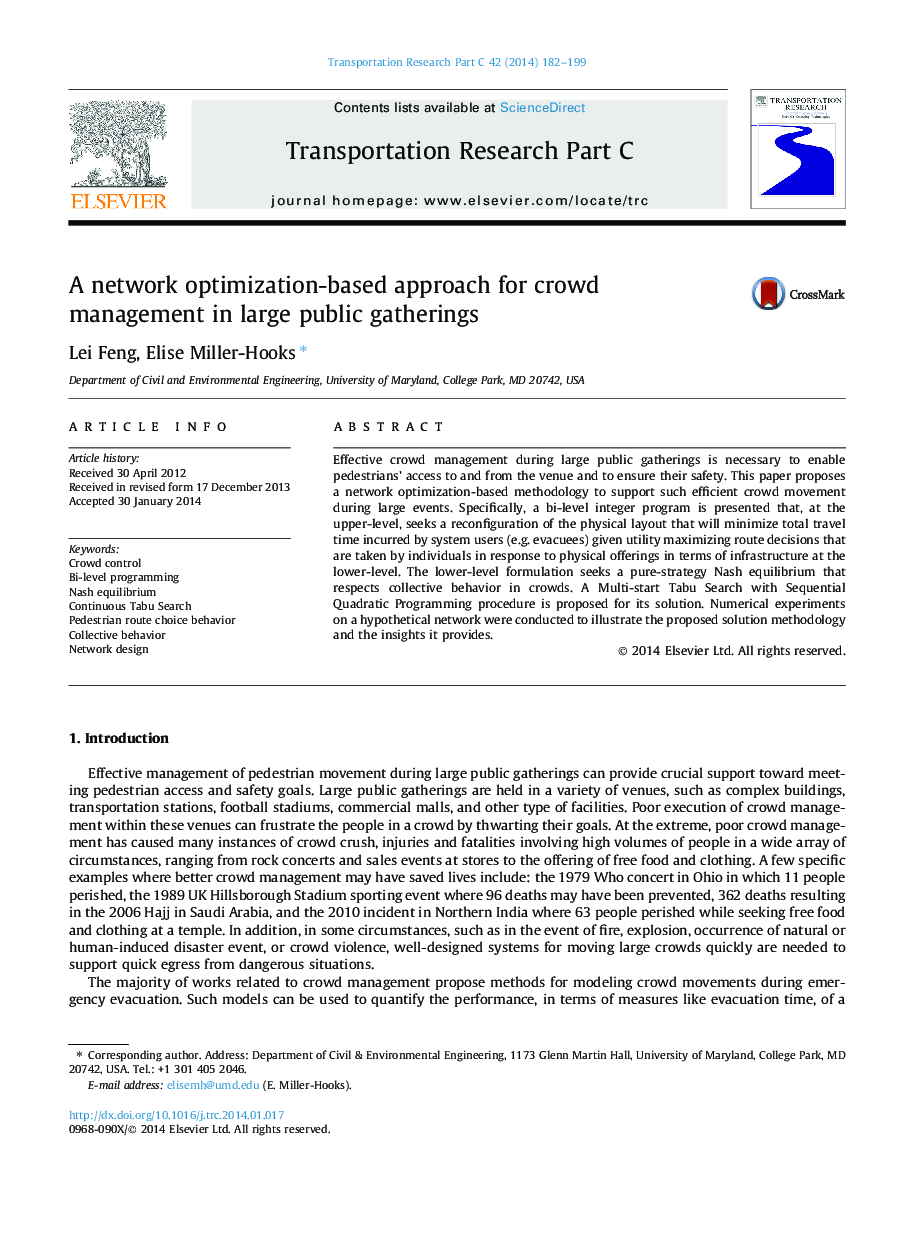| Article ID | Journal | Published Year | Pages | File Type |
|---|---|---|---|---|
| 525128 | Transportation Research Part C: Emerging Technologies | 2014 | 18 Pages |
•Conceptualizes and formulates layout reconfiguration for efficient crowd movement.•Models crowd control strategies as a network design problem.•Incorporates route choice and collective behavior in pedestrian assignment.•Pure-strategy Nash equilibrium employed to capture group dynamics.•Multi-start Continuous Tabu Search with SQP to address nonlinear bi-level program.
Effective crowd management during large public gatherings is necessary to enable pedestrians' access to and from the venue and to ensure their safety. This paper proposes a network optimization-based methodology to support such efficient crowd movement during large events. Specifically, a bi-level integer program is presented that, at the upper-level, seeks a reconfiguration of the physical layout that will minimize total travel time incurred by system users (e.g. evacuees) given utility maximizing route decisions that are taken by individuals in response to physical offerings in terms of infrastructure at the lower-level. The lower-level formulation seeks a pure-strategy Nash equilibrium that respects collective behavior in crowds. A Multi-start Tabu Search with Sequential Quadratic Programming procedure is proposed for its solution. Numerical experiments on a hypothetical network were conducted to illustrate the proposed solution methodology and the insights it provides.
